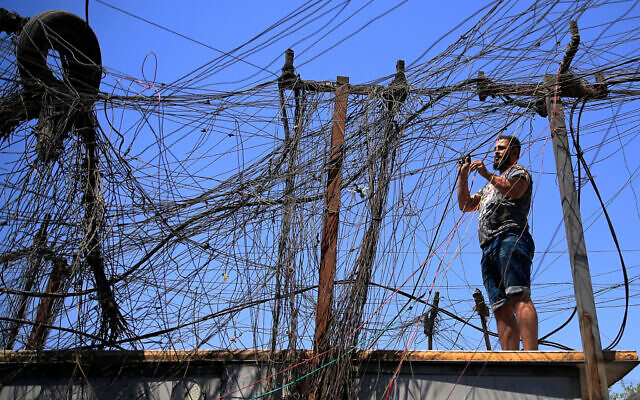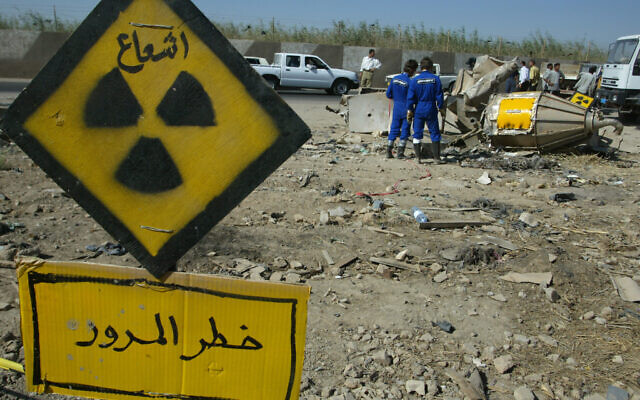Digital Horizon: Proving the Value of Unmanned Naval Surface Vehicles

[By Capt. George Galdorisi]
The international community has been tremendously proactive in undertaking operations, exercises, experiments, and demonstration to accelerate the development and fielding of unmanned surface vehicles, reflecting the real importance of these systems to world navies. Much of this work has occurred in and around the Arabian Gulf under the auspices of Commander U.S. Fifth Fleet and Task Force 59.
These ambitious exercises throughout the course of 2022 provided a learning opportunity for all participating navies. These culminated in the capstone unmanned event, Exercise Digital Horizon, a three-week event in the Middle East focused on employing artificial intelligence and 15 different unmanned systems: 12 unmanned surface vehicles (USVs) and three unmanned aerial vehicles (UAVs).
A key goal of Digital Horizon was to speed new technology integration across the 5th Fleet, and to seek cost-effective alternatives for Maritime Domain Awareness (MDA) missions. As Carrington Malin described the importance of Digital Horizon:
“Despite the cutting-edge hardware in the Arabian Gulf, Digital Horizon is far more than a trial of new unmanned systems. This exercise is about data integration and the integration of command and control capabilities, where many different advanced technologies are being deployed together and experimented with for the first time.
The advanced technologies now available and the opportunities that they bring to enhance maritime security are many-fold, but these also drive an exponential increase in complexity for the military. Using the Arabian Gulf as the laboratory, Task Force 59 and its partners are pioneering ways to manage that complexity, whilst delivering next-level intelligence, incident prevention and response capabilities.”1
Digital Horizon brought together emerging unmanned technologies and combined them with data analytics and artificial intelligence in order to enhance regional maritime security and strengthen deterrence by applying leading-edge technology and experimentation.2 Vice Admiral Brad Cooper, commander of U.S. Naval Forces Central Command, U.S. 5th Fleet and Combined Maritime Forces introduced the exercise and highlighted its potential: “I am excited about the direction we are headed. By harnessing these new unmanned technologies and combining them with artificial intelligence, we will enhance regional maritime security and strengthen deterrence. This benefits everybody.”3
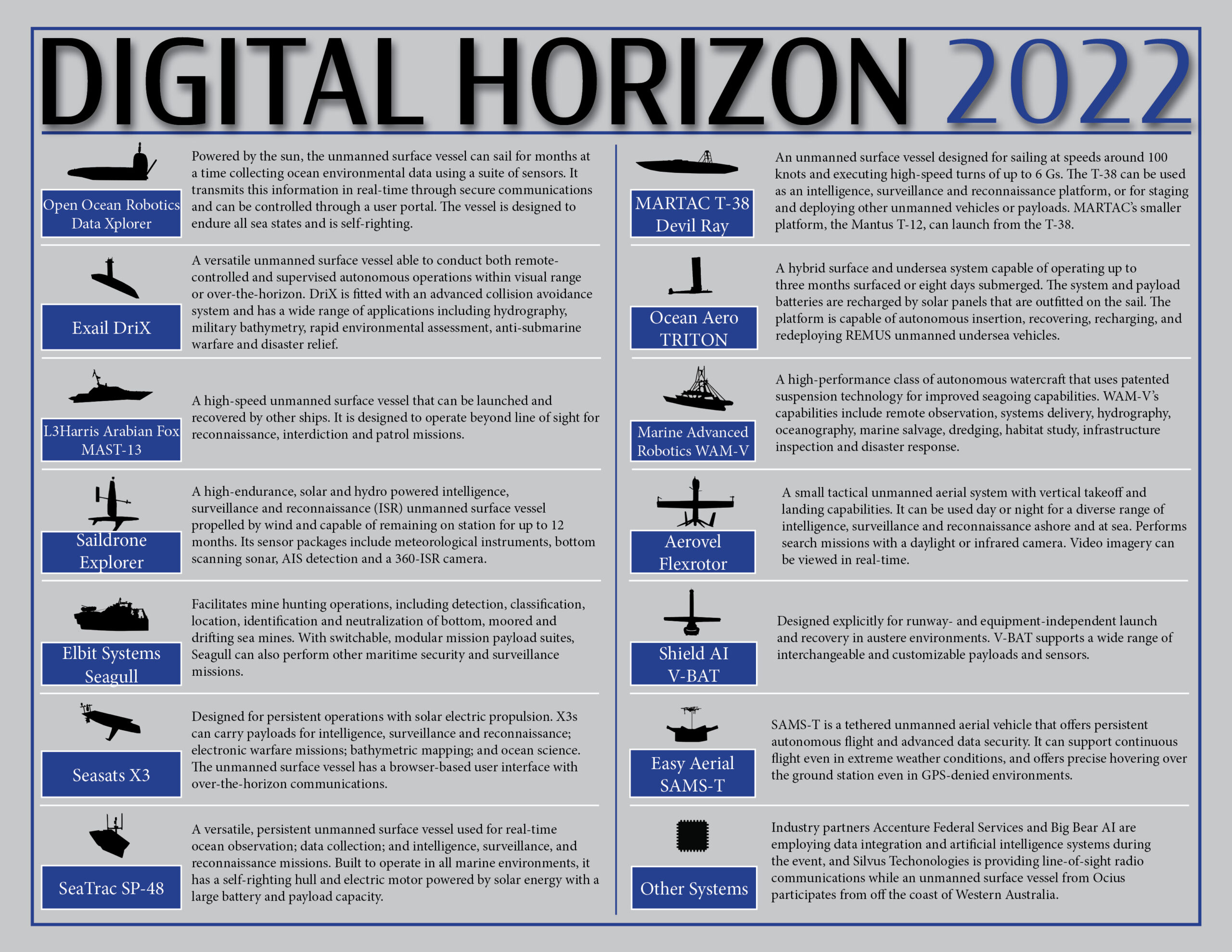 Click to expand. Graphic illustration depicting the unmanned systems that participated in Digital Horizon 2022. (U.S. Army graphic by Sgt. Brandon Murphy)
Click to expand. Graphic illustration depicting the unmanned systems that participated in Digital Horizon 2022. (U.S. Army graphic by Sgt. Brandon Murphy)
Captain Michael Brasseur, then-commodore of Task Force 59, emphasized the use of unmanned maritime vehicles to conduct intelligence, surveillance and reconnaissance missions, including identifying objects in the water and spotting suspicious behavior.4 He noted: “We pushed beyond technological boundaries and discovered new capabilities for maritime domain awareness to enhance our ability to see above, on and below the water.”5
During Digital Horizon, Task Force 59 leveraged artificial intelligence to create an interface on one screen, also called a “single pane of glass,” displaying the relevant data from multiple unmanned systems for watchstanders in Task Force 59’s Robotics Operations Center (ROC). Reviewing what was accomplished during this event, Captain Brasseur marveled at the pace of innovation: “We are challenging our industry partners in one of the most difficult operational environments, and they are responding with enhanced capability, fast.”6
One of the features of Digital Horizon, and in line with the first word of the exercise, “Digital,” was the ability of one operator to command and control five unique drones, a capability long-sought by U.S. Navy officials.7 The Navy is acutely aware of the high cost of manpower and is dedicated to moving beyond the current “one UXS, multiple joysticks, multiple operators,” paradigm that has plagued UXS development for decades.
Digital Horizon was a unique exercise from the outset. Task Force 59 worked with the Department of Defense’s Defense Innovation Unit (DIU) in order to leverage that organization’s expertise as a technology accelerator. Additionally, given the U.S. Navy’s ambitious goals to rapidly test and subsequently acquire USVs to populate the Fleet, CTF-59 used a contractor-owned/contractor operated (COCO) model to bring a substantial number of unmanned systems to Digital Horizon, well beyond those already in the inventory. This approach sidestepped the often clunky DoD acquisition system while providing appropriate oversight during the exercise and gaining operational experience with new systems.
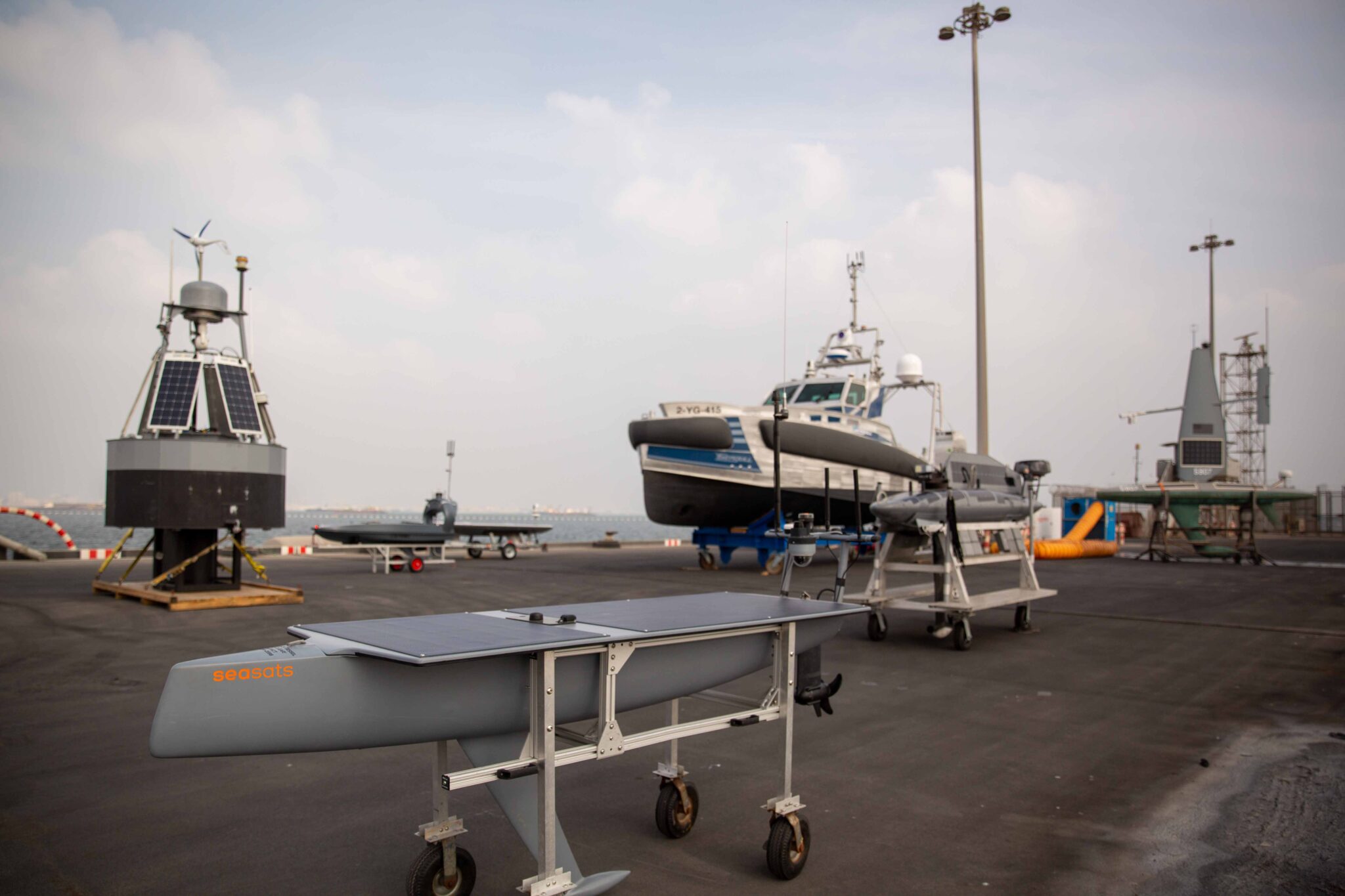 MANAMA, Bahrain (Nov. 19, 2022) Various unmanned systems sit on display in Manama, Bahrain, prior to exercise Digital Horizon 2022. (U.S. Army photo by Sgt. Brandon Murphy)
MANAMA, Bahrain (Nov. 19, 2022) Various unmanned systems sit on display in Manama, Bahrain, prior to exercise Digital Horizon 2022. (U.S. Army photo by Sgt. Brandon Murphy)
Another distinctive feature of Digital Horizon involved launching and recovering small UAVs from medium-size USVs. This lash-up leveraged the capabilities of both unmanned assets, enabling the long-endurance USVs to carry the shorter-endurance UAVs to the desired area of operations. This “operationalized” a CONOPS that emerged from the U.S. Navy laboratory community years ago.8
The results of Digital Horizon lived up to the initial hype. During a presentation at the 2023 Surface Navy Association Symposium, here is how Vice Admiral Cooper described what was accomplished during Digital Horizon:
“We are creating a distributed and integrated network of systems to establish a “digital ocean” in the Middle East, creating constant surveillance. This means every partner and every sensor, collecting new data, adding it to an intelligent synthesis of around-the-clock inputs, encompassing thousands of images, from seabed to space, from ships, unmanned systems, subsea sensors, satellites, buoys, and other persistent technologies.
No navy acting alone can protect against all the threats, the region is simply too big. We believe that the way to get after this is the two primary lines of effort: strengthen our partnerships and accelerate innovation…One of the results from the exercise was the ability to create a single operational picture so one operator can command and control multiple unmanned systems on one screen, a ‘Single Pane of Glass’ (SPOG)…Digital Horizon was a visible demonstration of the promise and the power of very rapid tech innovation.”9
The results of Digital Horizon could change the way the world’s navies conduct maritime safety and security. Having multiple unmanned systems conduct maritime surveillance, with the operations center then using big data, artificial intelligence and machine learning to amalgamate this sea of data into something that commanders can use to make real-time decisions, enables navies to “stretch” their crewed vessels and use them for more vital missions than merely conducting surveillance.
As one example of how Digital Horizon brought together COTS unmanned surface vehicles with COTS systems and sensors, the T-38 Devil Ray was equipped with multiple state-of-the-art COTS sensors to provide persistent surveillance. The T-38 provided AIS, full motion video from SeaFLIR-280HD and FLIR-M364C cameras, as well as the display of radar contacts on a chart via the onboard Furuno DRS4D-NXT Doppler radar. These were all streamed back to Task Force 59’s Robotics Operations Center via high bandwidth radios and SATCOM.
These exercises and initiatives are important if the Navy is to convince a skeptical Congress that its plans for unmanned systems are sound, and represent an important course change in the way the Navy intends to communicate with Congress, by “showing, not telling” what its unmanned systems can do.10 This approach is vital, for as long as Congress remains unconvinced regarding the efficacy of the unmanned systems the Navy wishes to procure; it is unlikely that funding will follow.11
Secretary of the Navy, Carlos Del Toro, explained this new “show, don’t tell,” philosophy built on an ongoing series of exercises, experiments and demonstrations, further indicating that he believes the Navy is “on the same page as Congress:”
“The Navy has a responsibility to be able to prove that the technology that Congress is going to invest in actually works and it meets what we need to address the threat. I think that’s the responsible thing to do…I don’t see it as a fight between Congress and the Department of Navy. I think we’re aligned in our thinking about what has to be done.”12
Indeed, in remarks at the Reagan National Defense Forum, Secretary Del Toro said the Navy intends to stand up additional unmanned task forces around the globe modeled after what Task Force 59 accomplished during Digital Horizon, noting:
“We’ve demonstrated with Task Force 59 how much more we can do with these unmanned vehicles—as long as they’re closely integrated together in a [command and control] node that, you know, connects to our manned surface vehicles. And there’s been a lot of experimentation; it’s going to continue aggressively. And we’re going to start translating that to other regions of the world as well. That will include the establishment of formal task forces that will fall under some of the Navy’s other numbered fleets.”13
Secretary of the Navy Del Toro continued this drumbeat during the U.S. Naval Institute/AFCEA “West” Symposium in February 2023. In a keynote address describing the Navy’s progress and intentions regarding integrating unmanned systems into the Fleet, he emphasized the progress that CTF-59 had made, especially in the area of successfully integrating unmanned systems and artificial intelligence during Digital Horizon.14
 A Marine Advanced Robotics WAM-V unmanned surface vessel operates in the Arabian Gulf, Nov. 29, during Digital Horizon 2022. (U.S. Army photo by Sgt. Brandon Murphy)
A Marine Advanced Robotics WAM-V unmanned surface vessel operates in the Arabian Gulf, Nov. 29, during Digital Horizon 2022. (U.S. Army photo by Sgt. Brandon Murphy)
Importantly, the U.S. Navy has now created the infrastructure to accelerate the testing and evaluation of unmanned surface vehicles. In 2019, the Navy stood up Surface Development Squadron One to provide stewardship for unmanned experimentation and manned-unmanned teaming.15 In 2022, seeking to put additional emphasis on unmanned maritime vehicles, the Navy established Unmanned Surface Vessel Division One (USVDIV-1), under the command of Commander Jeremiah Daley.16
This new division oversees medium and large unmanned surface vessels out of Port Hueneme Naval Base in Ventura County.17 Unmanned Surface Vessel Division One is engaged with the Fleet to move the unmanned surface vessels further west and exercise autonomy, payloads, and hull, mechanical and electrical (HM&E) systems to ensure that future programs of record (LUSV and MUSV) are successful from inception, and that they provide lethality and combat effectiveness for future naval and joint forces.
Digital Horizon presages a new paradigm in the way navies will think about uncrewed assets, no longer as “vehicles” but rather as “systems” that are nodes in a web of assets delivering far greater capability than the sum of the parts. World navies will conduct ambitious unmanned exercises, experiments and demonstrations throughout 2023 and beyond, and the lessons learned from Digital Horizon will no doubt inform those efforts.
Captain George Galdorisi (USN – retired) is a career naval aviator whose thirty years of active duty service included four command tours and five years as a carrier strike group chief of staff. He began his writing career in 1978 with an article in U.S. Naval Institute Proceedings. He is the author of 15 books, including four New York Times best-sellers. The views presented are those of the author, and do not reflect the views of the Department of the Navy or the Department of Defense.
This article appears courtesy of CIMSEC and may be found in its original form here.
References
1. Carrington Malin, “A Testbed for Naval Innovation,” Middle East AI News, December 1, 2022.
2. Aaron-Matthew Lariosa, “US Navy Highlights TF 59 Contributions to Fleet’s Unmanned Vision,” Naval News, January 23, 2023.
3. “U.S. Launches New Unmanned & AI Systems Integration Event,” U.S. Naval Forces Central Command Public Affairs, November 23, 2022, accessed at: https://www.cusnc.navy.mil/Media/News/Display/Article/3226901/us-launches-new-unmanned-ai-systems-integration-event/.
4. J.P. Lawrence, “Navy’s ‘Influx’ of Aquatic and Aerial Drones Tested in the Middle East,” Stars and Stripes, December 1, 2022.
5. “Digital Horizon Wraps Up: Task Force 59 Perspective, Second Line of Defense, December 22, 2022.
6. Geoff Ziezulewicz, “New in 2023: Here Comes the First-Ever Surface Drone Fleet,” Navy Times, January 3, 2023.
7. Justin Katz, “Accenture Demos Data Vis, C2 for Multiple USVs During Navy’s Digital Horizons Exercise,” Breaking Defense, December 16, 2022.
8. Vladimir Djapic et al, “Heterogeneous Autonomous Mobile Maritime Expeditionary Robots and Maritime Information Dominance,” Naval Engineers Journal, December 2014.
9. Audrey Decker, “5th Fleet Commander Details ‘Digital Ocean’ After TF-59 Reaches FOC,” Inside the Navy, January 16, 2023.
10. See, for example, George Galdorisi, “Catch a Wave: Testing Unmanned Surface Vehicles Is Becoming an International Endeavour,” Surface SITREP, Winter 2022.
11. “Navy Failing to Make ‘Critical Pivot’ In Unmanned Investment,” Inside the Navy, October 10, 2022.
12. Justin Katz, “Show, Don’t Tell: Navy Changes Strategy to Sell Unmanned Systems to Skeptical Congress,” Breaking Defense, March 10, 2022.
13. Jon Harper, “Navy to Establish Additional Unmanned Task Forces Inspired by Task Force 59,” Defense Scoop, December 4, 2022.
14. Remarks by the Honorable Carlos Del Toro, Secretary of the Navy, at the U.S. Naval Institute/AFCEA “West” Symposium, February 16, 2023.
15. Meagan Eckstein, “Navy Stands Up Surface Development Squadron for DDG-1000, Unmanned Experimentation,” USNI News, May 22, 2019.
16. “Navy to Stand Up New USV Command This Summer,” Inside the Navy, January 13, 2022.
17. Joshua Emerson Smith and Andrew Dyer, “Navy Ramps Up Efforts on Unmanned Vessels,” San Diego Union Tribune, May 16, 2022, and Diana Stancy Correll, “Navy Creates Unmanned Surface Vessel Division to Expedite Integration of Unmanned Systems,” Navy Times, May 16, 2022.
The opinions expressed herein are the author's and not necessarily those of The Maritime Executive.

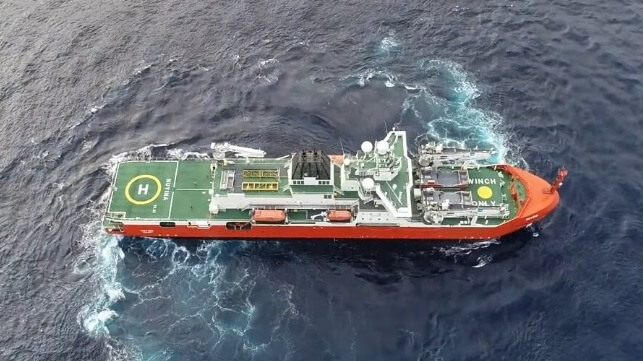

 "Could a sharp-eyed observer of mid-nineteenth-century Palestine have detected hints of the future struggle between Jews and Arabs over this land? It seems unlikely. The fact is that none of the observers at the time foresaw the conflict that was yet to come." Thus does Dowty, professor of international relations and political science emeritus at the University of Notre Dame, open his book and set the scene. Why was the dismal future not visible, what changed over time?
"Could a sharp-eyed observer of mid-nineteenth-century Palestine have detected hints of the future struggle between Jews and Arabs over this land? It seems unlikely. The fact is that none of the observers at the time foresaw the conflict that was yet to come." Thus does Dowty, professor of international relations and political science emeritus at the University of Notre Dame, open his book and set the scene. Why was the dismal future not visible, what changed over time? In Creating the Qur'an, Shoemaker, professor of religious studies and Christian studies at the University of Oregon, offers a closely argued account of how the Qur'an came into existence. It is a tour de force.
In Creating the Qur'an, Shoemaker, professor of religious studies and Christian studies at the University of Oregon, offers a closely argued account of how the Qur'an came into existence. It is a tour de force.

